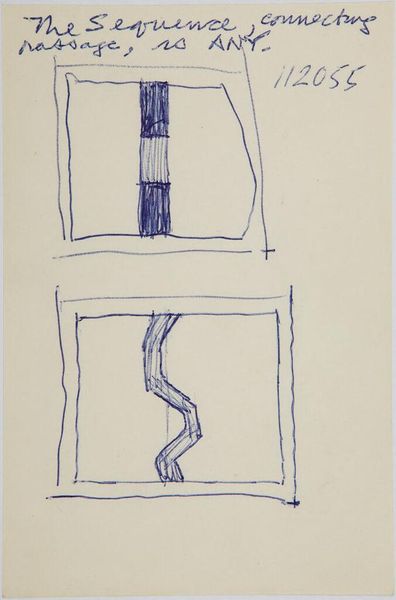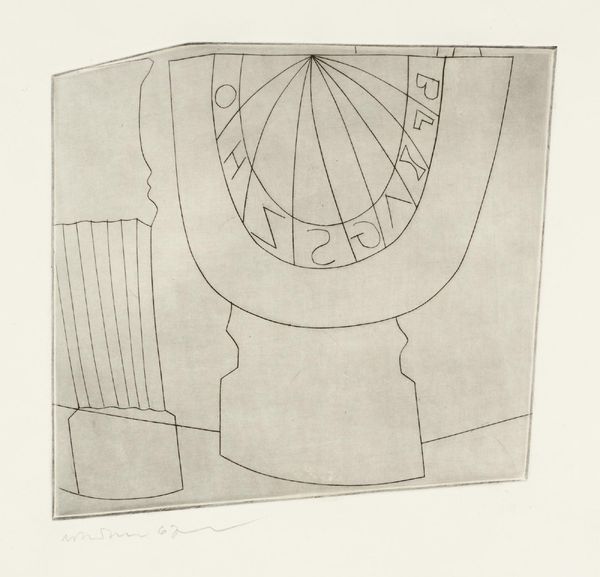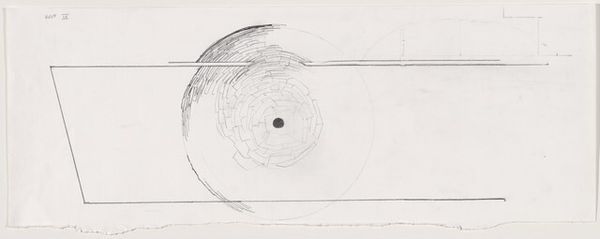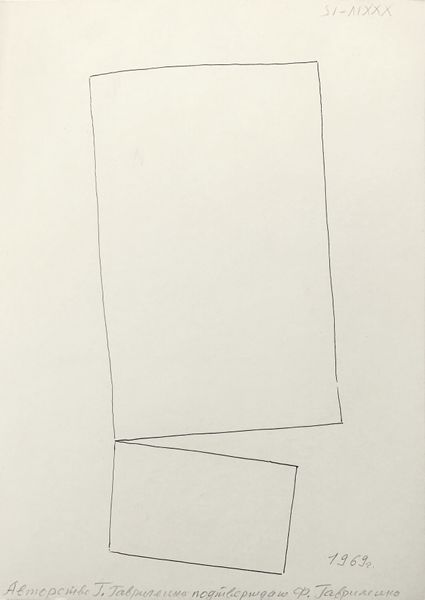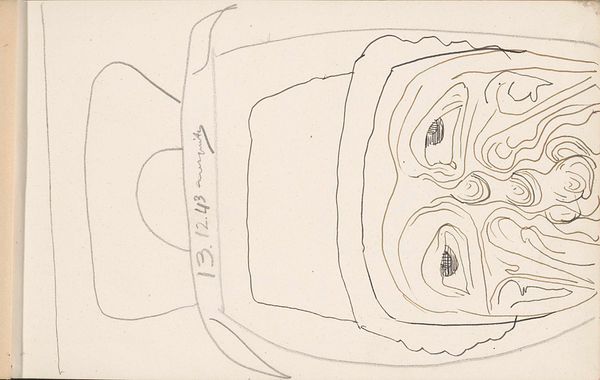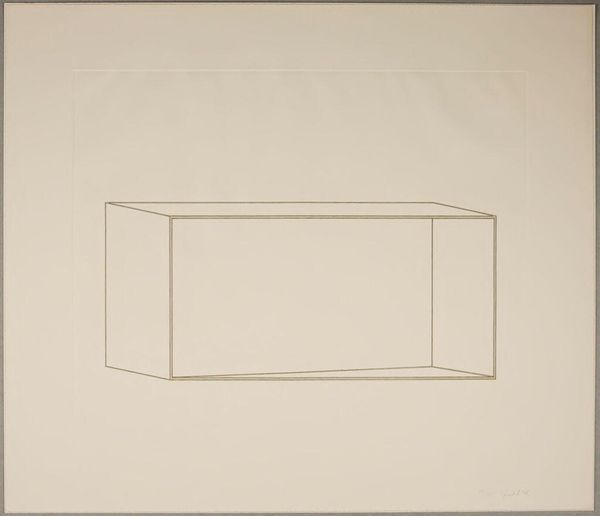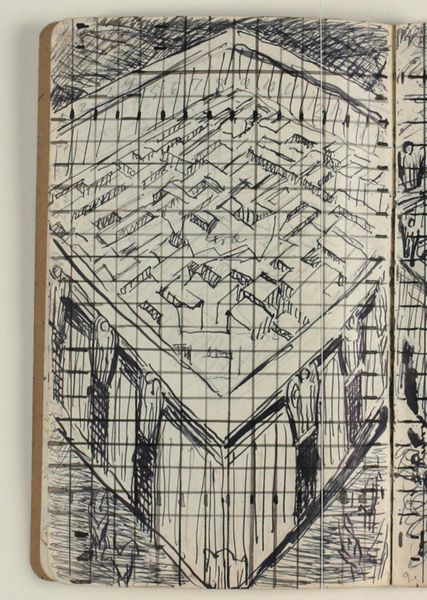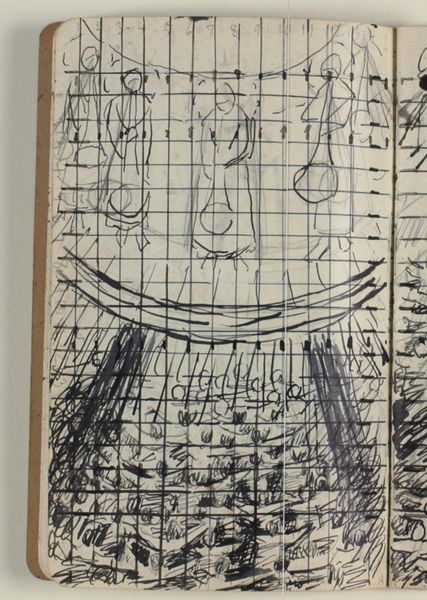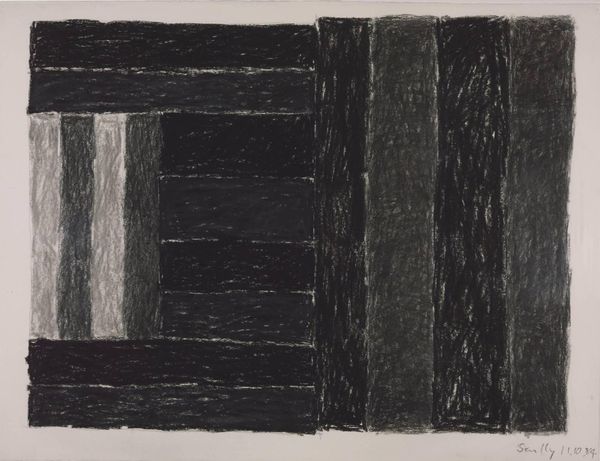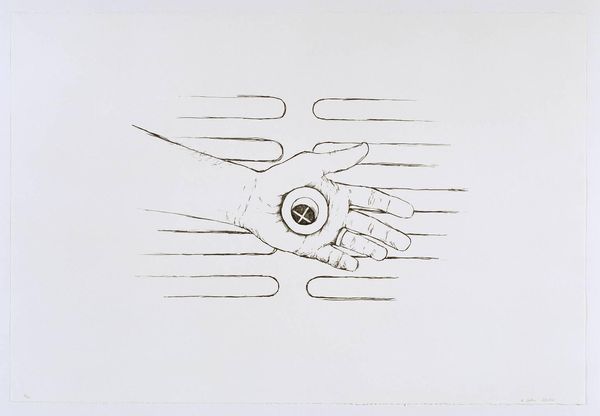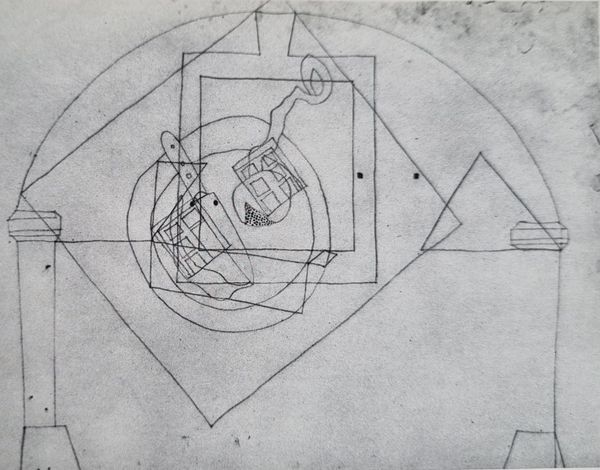![[no title] by Victor Pasmore](/_next/image?url=https%3A%2F%2Fd2w8kbdekdi1gv.cloudfront.net%2FeyJidWNrZXQiOiAiYXJ0ZXJhLWltYWdlcy1idWNrZXQiLCAia2V5IjogImFydHdvcmtzLzNjMmNjY2U4LWQyOTItNGQ1Mi05ZTNhLWYxODIwYTQxZjQ4YS8zYzJjY2NlOC1kMjkyLTRkNTItOWUzYS1mMTgyMGE0MWY0OGFfZnVsbC5qcGciLCAiZWRpdHMiOiB7InJlc2l6ZSI6IHsid2lkdGgiOiAxOTIwLCAiaGVpZ2h0IjogMTkyMCwgImZpdCI6ICJpbnNpZGUifX19&w=3840&q=75)
Dimensions: unconfirmed: 502 x 698 mm
Copyright: © Tate | CC-BY-NC-ND 4.0 DEED, Photo: Tate
Curator: Here we have a piece by Victor Pasmore, currently untitled, but held in the Tate Collections. It's rendered in ink, and the dimensions are roughly 50 by 70 centimeters. Editor: It strikes me as quite austere. Stark lines, a somewhat unsettling central motif… there’s a tension between order and something almost primal in that eye-like shape. Curator: Pasmore's work is so interesting when viewed through the lens of British art history. He moved from representational painting toward abstraction after the second world war. Editor: And how does that shift reflect the socio-political landscape? Was this move toward abstraction a rejection of the established order, an expression of disillusionment? Curator: Perhaps. Post-war, abstraction became a powerful vehicle for exploring new modes of seeing and being, challenging the very purpose of art in public life. Editor: It’s compelling how something so minimal can evoke such layered questions about identity, seeing, and purpose. I find myself pondering the gaze, who's looking at whom, and why. Curator: It's a testament to the power of art to provoke ongoing dialogues. Editor: Absolutely, art as an active agent, prompting us to reconsider and reimagine.
